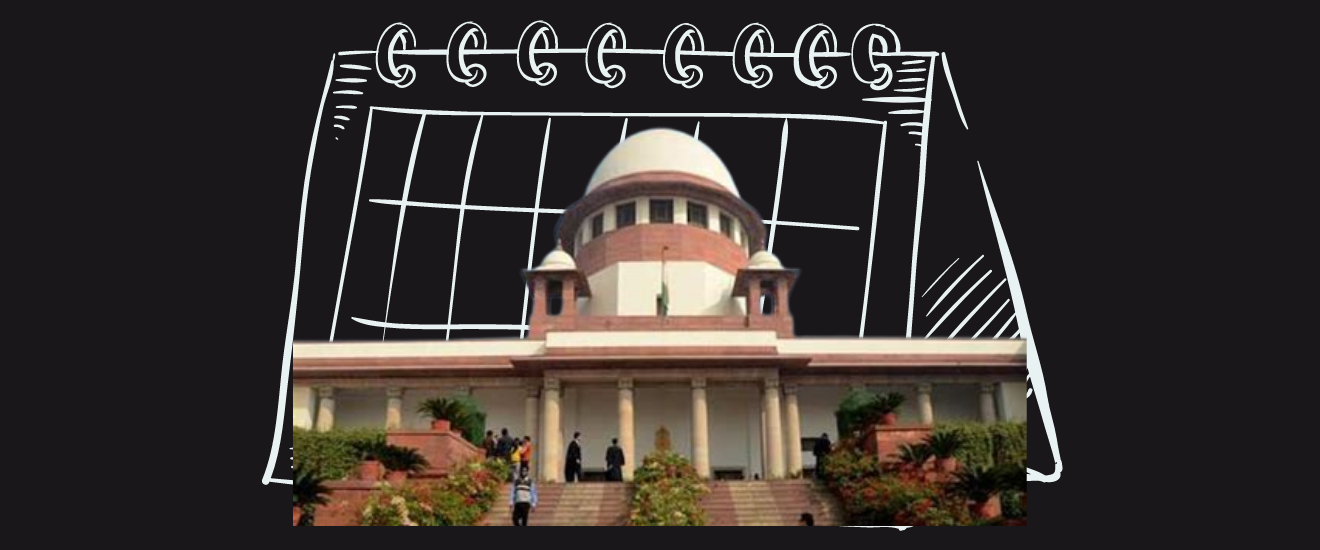Court Data
SC Vacations: Comparing India to other Countries
SCO takes a preliminary look at the calendars of the apex courts of Australia, Bangladesh, India, Singapore, the UK and US.

On May 18th, the Supreme Court’s seven-week long summer vacation begins. During this time it operates at a greatly reduced capacity, hearing only urgent matters. Many scholars and advocates have suggested that the Court could reduce the length of its vacations, to better deal with the large number of pending cases before it. However, before adopting this line of thinking, it’s worth comparing our Supreme Court’s calendar year to those of other apex courts around the world.
In this post, we take a preliminary look at the calendars of the apex courts of Australia, Bangladesh, India, Singapore, the United Kingdom and the United States. While the Supreme Court of India does have relatively long vacations, it also hears oral arguments on a daily basis, all year round.
Daily oral arguments
Our Supreme Court, much like its equivalent in Bangladesh, hears oral arguments every week-day, throughout the year. By contrast, the apex courts of Australia, Singapore, and the United States only hear oral arguments during specified periods. For example, the High Court of Australia only sits to hear arguments for two weeks per month. In the United States, the Supreme Court only hears arguments for an average of five to six days in a month.
As the third column in the graph below illustrates, the Supreme Courts of India and Bangladesh sit for roughly twice the number of days per year, compared to the apex courts of Australia and the US. The Supreme Court of Singapore finds itself somewhere in the middle, with 145 sitting days. Finally, the Supreme Court of the United Kingdom matches our apex court, according to its calendar. Its four annual terms span across 189 days in its 2019-20 legal year (not including public holidays).
Understanding vacation days in context
There appears to be a correlation between how many days a court takes off and how many days it sits. On the one hand, the apex courts of India and Bangladesh sit for nearly 200 days in a year, while also being on holiday for nearly 100 days per year. On the other hand, the top courts of Australia and the United States sit for under 100 days per year, but also only have vacations for 10 days per year. The Supreme Court of Singapore finds a middle ground with 145 sitting days and 33 vacation days (in 2020).
Clearly, the Supreme Court of the United Kingdom is an outlier. However, this may primarily have to do with how it counts holidays. In India, the Supreme Court’s calendar marks specific days as vacation days. By contrast, the UK Supreme Court divides its legal year into four terms: Michaelmas, Hilary, Easter and Trinity. While the UK Supreme Court’s calendar only records one day in 2020 as a holiday, one could consider the days between terms as vacation days as well. In that case, the UK Supreme Court would in fact have twice as many vacation days as its south Asian peers. More research is required to determine exactly how many non-working days the judges of the UK Supreme Court enjoy.
This outlier aside, the data appears to show that globally vacation days increase proportionally to sitting days. It may be that judges require more rest if they have to spend more time hearing oral arguments.
COVID-19 Disruptions
Any discussion of reducing the Court’s vacation days takes a completely different tone this year. Due to the COVID-19 pandemic, the Court has been unable to operate at full capacity for the last two months. The vacations may serve as a perfect way to catch up on the backlog.
In fact, various news agencies, such as Zee News, have reported that the Supreme Court is strongly leaning towards giving up its seven-week-long summer vacation. Will this set a new precedent?
Method:
Numbers pulled from calendars of respective apex courts. Numbers of days between dates calculated with the assistance of TimeAndDate.com (national public holidays taken into account):
- High Court of Australia – 2020 Calendar
- Supreme Court of Bangladesh – 2020 Calendar – included holidays that fell on weekends (Fri or Sat) in holiday count; all working days counted as sitting days
- Supreme Court of India – 2020 Calendar – included holidays that fell on weekends (Fri or Sat) in holiday count; all working days counted as sitting days
- Supreme Court of Singapore – 2020 Calendar – Year-End Court Vacation counted as only holiday
- Supreme Court of the United Kingdom – 2019/20 Term Dates – 8 May counted as only holiday; term dates counted as sitting days
- Supreme Court of the United States – 2019/20 Calendar – non-argument sessions and conference days also counted as sitting days
Definitions:
- Holiday – any day on one of the above calendars marked as a holiday or vacation
- Sitting days – days where a court is in session, meaning the judges of the court sit together to hear arguments and/or attend to other judicial matters
